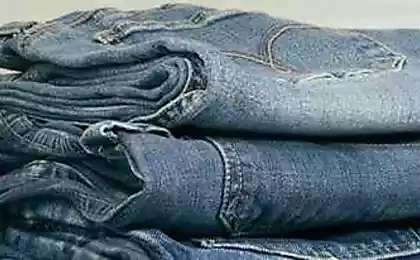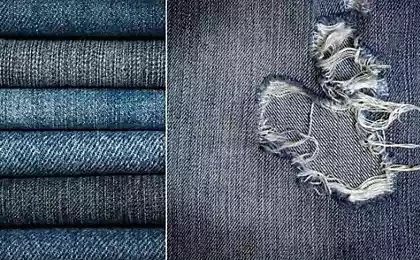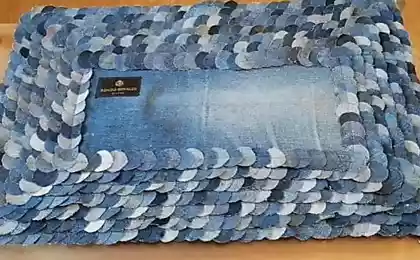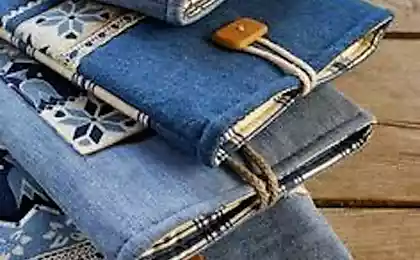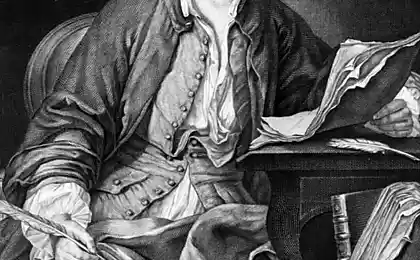536
Facts from the history of jeans

1. The fabric from which traditionally make jeans, called "denim", which literally translated from French means "from Nimes." The secret of this material is a special weave: yarn dyed external and internal - not. This feature allows us to successfully manipulate the color and achieve "elegant scrapes", which is so attractive to fans of style. No wonder the slogan of many brands of denim trousers goes something like this: "The longer you wear them, the better they look».
2. Classic denim dye - indigo. Initially, the indigo dye kneaded in ashes. Of course, the fabric is dyed so always worth inexpensive, and therefore old enough only for the common people.
3. One of the versions of the appearance of the word "jeans" is. Fabric for working clothes (including denim) exported by sea from the Italian port of Genoa in the Italian pronunciation of "Genova", which is consonant with the word "jeans».
4. The earliest version of the appearance of jeans attested in the British port books of the XVI century: the United Kingdom from Genoa imported fabric was later called "denim", they sewed pants and sold them throughout Europe under the name "Jane" or "Gin". < br />
5. Another version - French. In 1750, one John Holker created the "Book of samples of the textile industry in France", which have been described and depicted eight models of trousers, strongly reminiscent of modern jeans.
6 . Today, it is believed that the first genius who came up with to put together a solid cheap fabric, comfortable and pleasant style democratic universal color, Levi Strauss was born in Bavaria in a large Jewish family, and since 1829 US citizen. In March 1853 at the invitation of the young Levi's sister Fanny and her husband - textiles trader David Stern - came in covered gold rush San Francisco. At the request of brother-Levi took with him a load of fabric for tents. When they reached the place, an enterprising Strauss immediately realized that the biggest problem miners were ... pants. Levi guessed put to use brought a tarp and ordered a local tailor the first batch of 'overalls without top "(so called his product himself Levi Strauss).
7. In 1872, a tailor from Nevada Jacob Davis, who bought the firm Straussov fabric sent Levy a letter where he wrote about the invention of the original method of tailoring trousers: Davis put copper rivets on the areas with the largest load - pocket corners and codpiece. And because he had no money to patent his invention, he offered to do it Levi. May 20, 1873 Strauss and Davis became the owners of the patent, and their offspring has found copper rivets and familiar pyatikarmanny appearance.
8. In 1941, the look of the jeans were made significant changes. It was decided to remove the copper rivets from the groin area - the unfortunate part, inevitably red-hot by the fire, pretty spoiled life to fans of denim fashion.
9. During World War II, jeans in the US has become particularly popular. They even say that they were sold only to those who took part in the hostilities.
10. In the late 50-ies on the practicality and democratic workers' pants pointed guru "Beat" by John Osborne. Complementing the image of "beatniks" jeans entered the youth culture, and quickly began to gain momentum in popularity, despite the fact that they were not allowed to appear in schools and offices.
11. In the USSR, first saw the jeans thanks to the International Festival of Youth and Students in 1958. Overseas new liking of Soviet youth. After some time in the Soviet Union, a new concept of "black marketeer". In 1960, speculators Roars and Feinberg received the death penalty for foreign exchange transactions. Trade jeans featured as one of the counts.
12. At the ideological flag jeans have become thanks to the hippie movement, which enriched denim fashion. In the 70 years of his pants were decorated with beads, sequins, stripes and embroidery. These ideas and still remain extremely popular.
13. The Americans have long been no problems in order to choose the jeans fit. It is now possible in the store to make your settings in the computer that "calculate" what will suit you the most and send the order to the factory. Three weeks later, your personal jeans will be ready and will cost only ten dollars more expensive shops prices.
14. on the podium jeans were not immediately apparent. In the late 60's, Louis Ferro successfully demonstrated "denim pants", fully embroidered with sequins. Subsequently, the denim style has become a source of inspiration for many designers. Creativity Alexander McQueen, Karl Lagerfeld and Jean Paul Gaultier proof of this. By the way, almost every Western designer now has a line of "names" of products from denim.
15. Most recently, the fashion world there was a novelty - jeans under a Russian name. The pioneers of this business, we have become Valentin Yudashkin and Alexei Grekov.
Source: www.kabanik.ru
via factroom.ru
